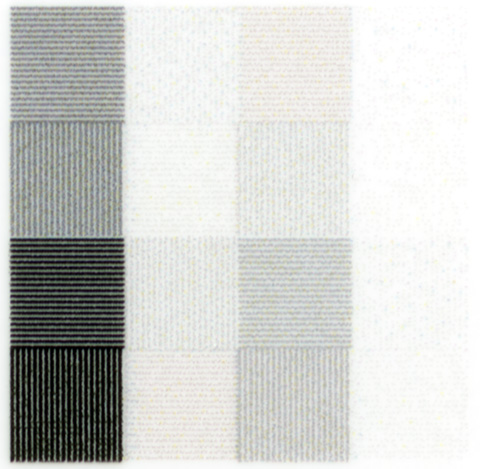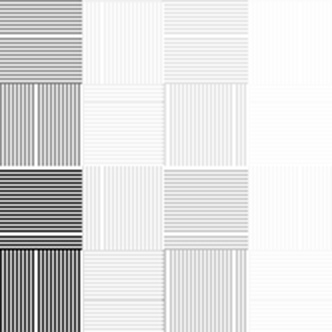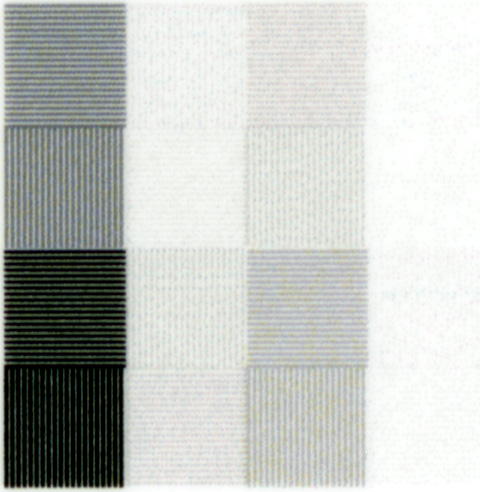After a couple of false starts, I created the following test image for resampling tests: The test image has a smooth gradient in the upper left corner, a series of lines at two tones and two angles in the lower left corner, two characters of Zone V antialiased text, and a crop from an actual… [Read More]
Inkjet printing on Epson, part 4
Before moving on to optimum resampling strategies in practice, which is where I’m going with this Epson printer testing, I thought I’d take a look at what happens with the 3880 at 1440/720 dpi resolution and “finest detail” unchecked. I used ABW mode, and the same paper as for the other tests. The first thing… [Read More]
Inkjet printing on Epson, part 3
I thought I’d look at the way the Epson 3880 and the driver resample images at 2880/1440 dpi. I took the now-familiar grating at 700 ppi, and resampled it in Photoshop using nearest neighbor. This is what I got: Then I printed a 700 ppi image using ABW. Here’s what it looks like: The pattern… [Read More]
Inkjet printing on Epson, part 2
I thought I’d compare the Epson driver’s color mode to the Advanced B&W (ABW) mode that I used in yesterday’s post. Here is the test grating at 360 ppi, printed at 2880/1440 dpi: Except for some color shifts that vary with gray level, it looks a lot like the ABW print. At 720 ppi, it looks like… [Read More]
Inkjet printing on Epson, part 1
I’ve had some e-mail correspondence that suggests something about the Epson inkjet hardware and software: That Epson has, in my words, dumbed down the traditional error diffusion dither algorithm so that it can’t represent detail finer than 720 pixels per inch at 2880 DPI resolution, or finer than 360 pixels per inch at 1440 DPI… [Read More]
- « Previous Page
- 1
- …
- 537
- 538
- 539
- 540
- 541
- …
- 574
- Next Page »




